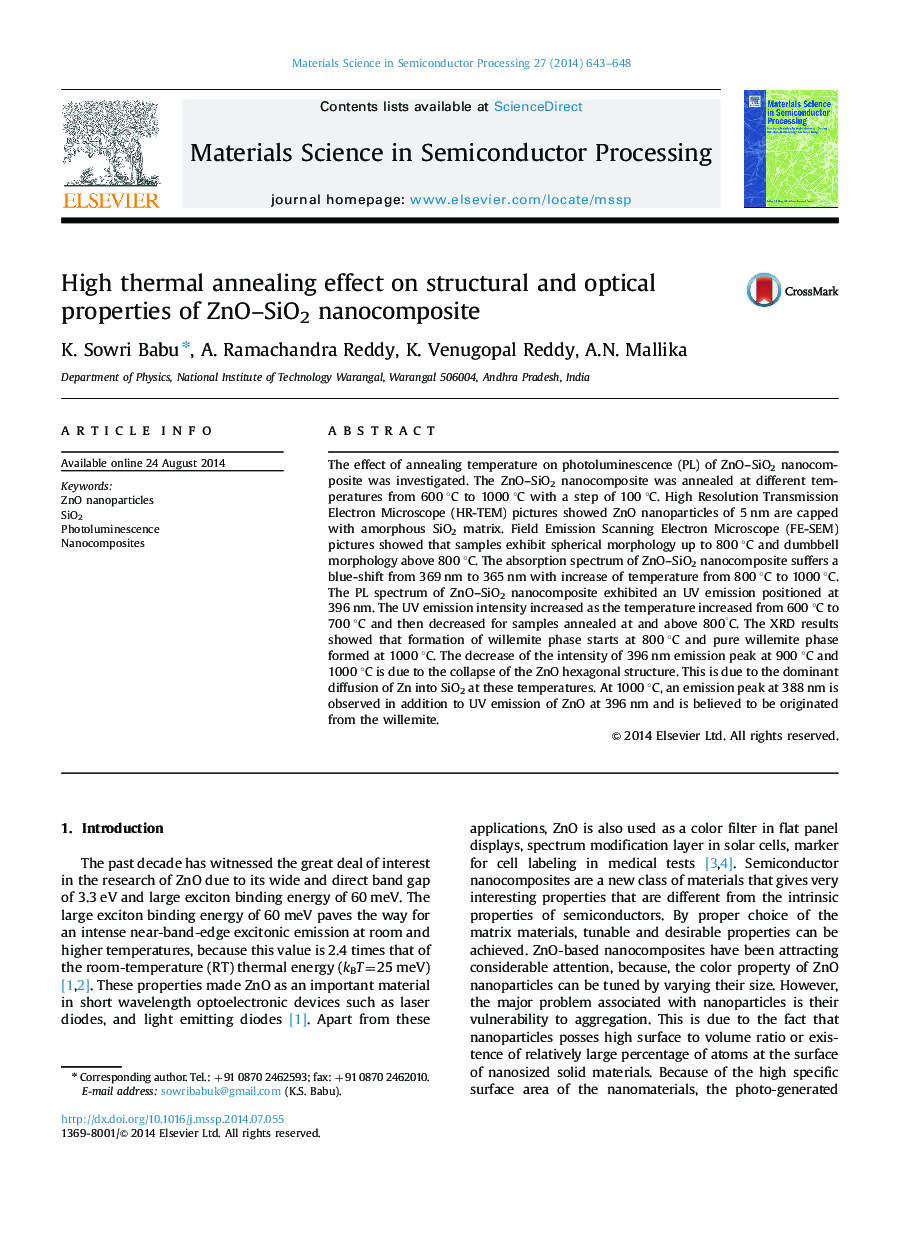| Article ID | Journal | Published Year | Pages | File Type |
|---|---|---|---|---|
| 728471 | Materials Science in Semiconductor Processing | 2014 | 6 Pages |
The effect of annealing temperature on photoluminescence (PL) of ZnO–SiO2 nanocomposite was investigated. The ZnO–SiO2 nanocomposite was annealed at different temperatures from 600 °C to 1000 °C with a step of 100 °C. High Resolution Transmission Electron Microscope (HR-TEM) pictures showed ZnO nanoparticles of 5 nm are capped with amorphous SiO2 matrix. Field Emission Scanning Electron Microscope (FE-SEM) pictures showed that samples exhibit spherical morphology up to 800 °C and dumbbell morphology above 800 °C. The absorption spectrum of ZnO–SiO2 nanocomposite suffers a blue-shift from 369 nm to 365 nm with increase of temperature from 800 °C to 1000 °C. The PL spectrum of ZnO–SiO2 nanocomposite exhibited an UV emission positioned at 396 nm. The UV emission intensity increased as the temperature increased from 600 °C to 700 °C and then decreased for samples annealed at and above 800°C. The XRD results showed that formation of willemite phase starts at 800 °C and pure willemite phase formed at 1000 °C. The decrease of the intensity of 396 nm emission peak at 900 °C and 1000 °C is due to the collapse of the ZnO hexagonal structure. This is due to the dominant diffusion of Zn into SiO2 at these temperatures. At 1000 °C, an emission peak at 388 nm is observed in addition to UV emission of ZnO at 396 nm and is believed to be originated from the willemite.
